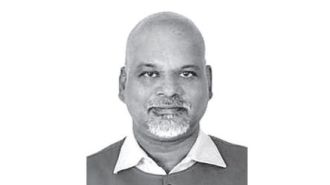Reserves
Reserves is the term VCs use to describe funds they “reserve” for follow-on financings of their portfolio companies.
Here are some things entrepreneurs should know about VCs and reserves:
- One very important thing that separates a strong VC firm from all other sources of capital is that the best VC firms reserve capital for follow-on financings for their portfolio companies and can be counted on to participate in subsequent financing rounds. This is not true for angel investors, seed funds, growth funds, and strategic investors. I don’t mean to be disparaging of these other sources of capital. They all are important at various stages of development. But if you want someone you can count on in your cap table, that would be a VC firm, particularly a top tier VC firm.
- Most top VCs will choose to take their “pro-rata share” of follow-on rounds. That means they will invest enough capital to avoid being diluted by the follow-on financing round. If a VC owns 15% of your company, they most likely are going to want to take 15% of follow-on rounds. That means that you can’t raise your next round from your VC investors, but you can count on them for a material part of the round. There are exceptions to this rule, and they are called “inside rounds”, but entrepreneurs should not count on inside rounds. It is generally preferable to raise an outside round, although there are exceptions to that rule.
- VCs raise money in discrete funds. These funds are pools of capital that are capped at some number. That number could be $100mm, $500mm, or $1bn, or more. VCs generally do not like to, and are often prohibited from, “cross investing” between these discrete funds. That means if your company raised money from USV 2004, LP (the name of our first fund, a $125mm fund), it will be hard for us to invest in your company out of USV 2008, LP (the name of our second fund, a ~$150mm fund).
- For this reason, experienced VCs have learned to create large reserves in their funds for supporting their portfolio companies. That means that a firm like USV might go back to its investors for a new fund (USV 2008) after only investing a portion of a fund (USV 2004). At USV, we generally go back to our investors for a new fund after investing about half of a fund. That means that we reserve roughly half of a fund for follow-on investments.
- VCs also have a tool called “recycling” at their disposal to supplement these reserves. At USV, we have the right to take some of our realized proceeds in a given fund and reinvest them in the portfolio companies of that fund. That recycling capability is typically capped in the agreement between the VCs and their investors. At USV, that recycling cap is roughly 25-30% of our funds.
So, given all of this, here is what entrepreneurs should understand:
- VCs, particularly top VCs, can be counted on to support a portfolio company from round to round, particularly for their pro-rata share.
- But VCs don’t have unlimited resources to invest in your company. If they are investing in your company out of a $150mm fund, that is the total amount of capital they have at their disposal as far as you are concerned.
- And a typical VC fund will have 20, 30, 40 portfolio companies in it, so those funds are allocated to the entire portfolio, not your company.
- If a VC invests $3mm in your company, they likely have another $3mm reserved for your company and may have as much as $6mm (2x the initial investment) reserved for it. Don’t expect more than that.
At USV, we take reserves very seriously. We know that early stage companies require a fair amount of capital to grow into profitable sustainable businesses and we work hard to make sure that we have the staying power that our portfolio companies require from us. Specifically, we have done two things to help us manage this reserves issue:
- For each fund we raise, we build a model of the portfolio that lays out all future financing rounds as far as we can predict them. We estimate the timing, size, and probability of that financing round happening. We then run a “monte carlo simulation” of that portfolio to develop a statistical distribution of outcomes. That looks like a normal distribution and we make sure we have a 95% probability of being able to participate in all of these future funding rounds. Practically speaking, this tool allows us to determine how many portfolio companies we should put in each fund before we go back to our investors for another fund.
- We have raised two Opportunity Funds which allow us to continue to participate in funding rounds for our most successful portfolio companies that start raising very large growth rounds. We also use these Opportunity Funds to occasionally participate in later stage rounds of companies that we did not invest in at the early stage.
One of the most common mistakes I see new “emerging VC managers” make is that they don’t sufficiently reserve for follow-on investments. They don’t go back for a new fund until they have invested 70 to 80% of their first fund and then they run out of money and can’t participate in follow-on rounds. They put too many companies into a portfolio and they can’t support them all. That hurts them because they get diluted by those rounds they can’t participate in. But it also hurts their portfolio companies because the founder and/or CEO has to explain why some of their VC investors aren’t participating in the financing round.
Most people think that VC is all about the initial portfolio construction, selecting the companies to invest in. But the truth is that is only half of it. What happens with the portfolio after you have selected it is the other half. That includes actively managing the portfolio (board work, adding value, etc) and it includes allocating capital to the portfolio in follow-on rounds, and it includes working to get exits. And it is that second part that is the harder part to learn how to do. The best VC firms do it incredibly well and they benefit enormously from it.






